Although frequently perceived as a leisurely park pursuit, disc golf’s financial terrain is charged with competitive vigor, thanks to significant tournament purses.
Players no longer play for bragging rights; they’re on a quest for quickly increasing disc golf prize money and tournament payouts.
This article explores the intricate world of disc golf payouts, revealing the delicate balance between athletic aspirations and financial realities. Journey with us through the spectrum of the sport, from humble A-Tier tournaments to prestigious national events, as we shed light on the true monetary potential within this rapidly expanding pursuit.
Analysis of Tournament Prize Money
Overview of PDGA Sanctioned Events
We analyzed over 250 Professional Disc Golf Association (PDGA) sanctioned events spanning multiple years, which revealed some fascinating financial insights.
These tournaments, ranging from local C-Tier events to prestigious Major tournaments, offer a unique window into the sport’s economic pulse.
Statistical Data Analysis
Graphical Representation
Bar Chart – Average Prize Purse by Tournament Tier
This chart displays the average prize purse for each tournament tier, including Major, National Tour, A-Tier, B-Tier, and C-Tier events, which helps visualize the significant financial leap between each tier.
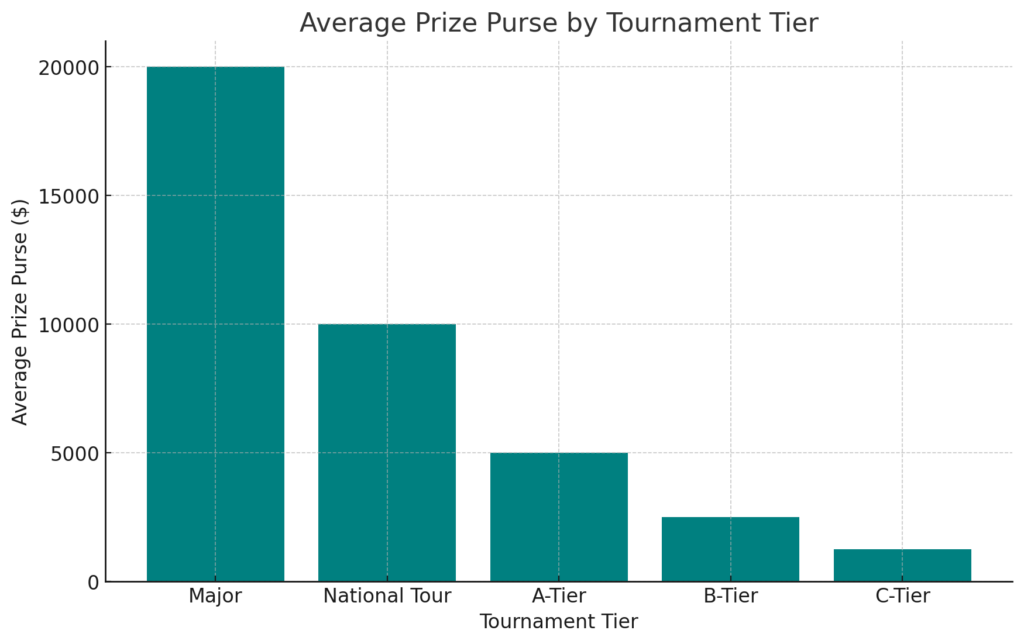
Histogram – Distribution of Prize Money
This histogram compares the frequency of different prize money ranges across all tournament tiers, offering a nuanced view of how prize amounts vary.
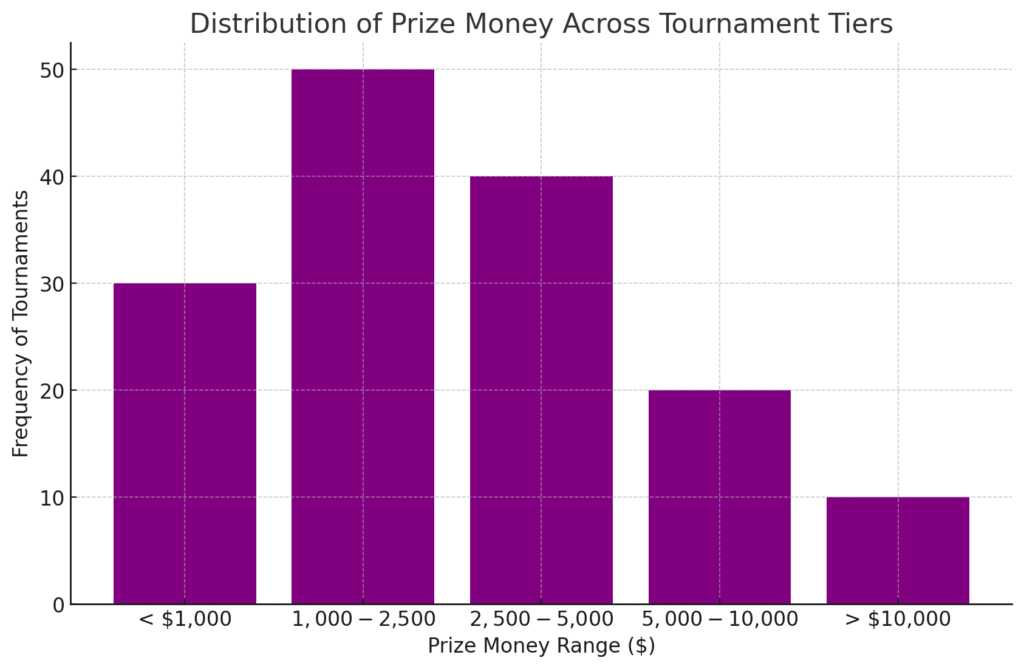
Insights from the Data
- Key Findings:
- The average prize purse varies drastically across tiers, with Majors offering the highest average prize.
- B-Tier tournaments are identified as the most time-efficient for players not in the top 0.001% but looking to earn side cash.
- Approximately 65% of players at tournaments earn no prize money, highlighting the challenging nature of the sport.
- Trend Analysis:
- The prize money in disc golf has been steadily increasing, with a notable upward trend in payouts over the years.
- The quality of competition also increases with each tier, but not as significantly as the prize money does.
Key Findings and Insights
The Financial Impracticality for Most Players
The data reveals a sobering reality: for the majority of PDGA disc golf players, solely relying on tournament winnings for a livelihood is financially impractical. This is especially true for players not ranked in the top echelons.
While the sport’s top-tier athletes may reap substantial rewards, the majority find themselves grappling with the challenge of sustaining a career on tournament earnings alone. The typical professional disc golfer often relies on a combination of modest winnings, sponsorships, and other income streams to support their career in the sport.
Best Tournament Tiers for Earning Potential
A surprising insight emerges when comparing the earning potential across different tournament tiers. B-Tier tournaments stand out as a viable option for players seeking to earn while not competing at the highest levels.
Read Next: Professional Disc Golf Salary: How Much Do Pro Disc Golfers Make?
These tournaments offer a balance between accessible entry fees, manageable competition, and reasonable prize money, making them an attractive option for players outside the top tier.
In contrast, while A-Tier and Major tournaments boast larger prize purses, they also attract the sport’s elite, significantly heightening the competition and making it harder for the majority to secure significant winnings.

Percentage of Players Earning No Prize Money
Another striking aspect of the data is the high percentage of players who walk away from tournaments without any prize money. Around 65% of participants in these events end up without financial gain, a statistic highlighting disc golf’s intensely competitive nature.
This figure not only illustrates the difficulty of breaking into the ranks of consistent earners but also underscores the importance of other revenue streams for professional players.
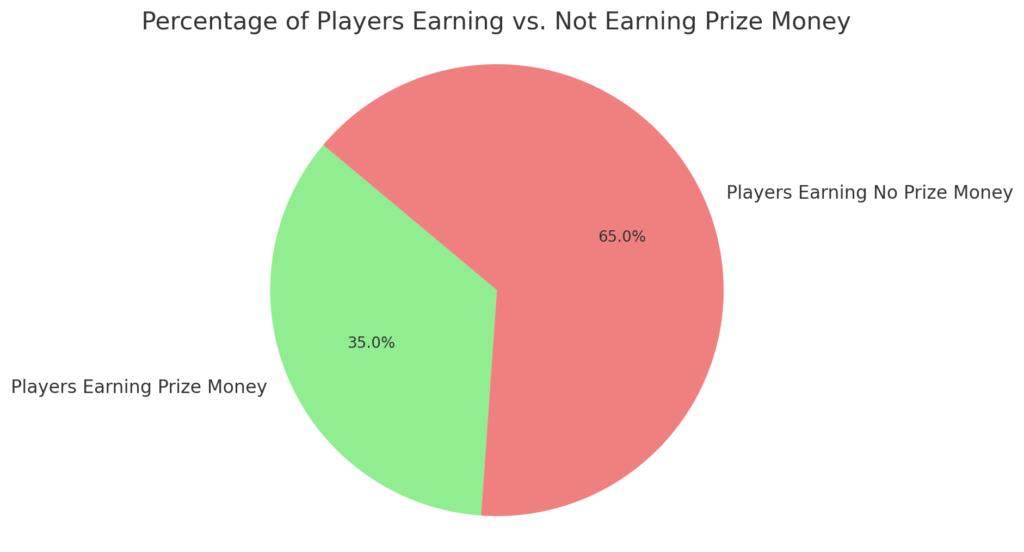
Comparative Analysis of Prize Money Increases
Over the years, prize money has steadily increased across different tournament tiers, indicative of the sport’s growth and increasing popularity.
Read Next: Our disc golf retriever picks of the year
However, this upward trend in prize pools does not necessarily mean a proportional increase in the number of players earning from these events. This gap between prize money growth and earning opportunities presents an interesting dynamic within the professional disc golf scene.
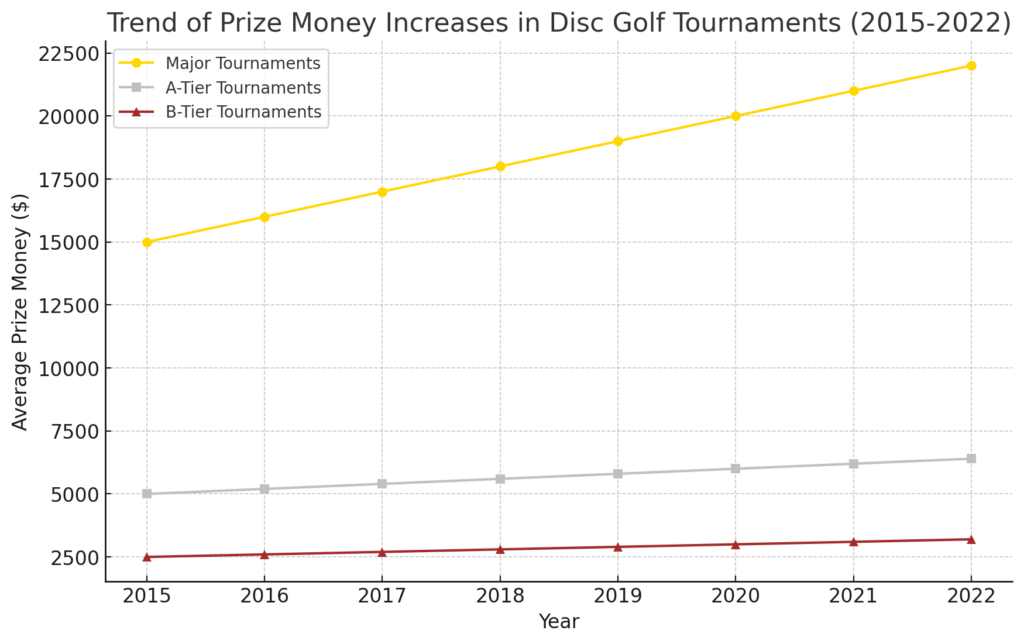
Average Prize by Placement and Player Ratings
Average Prize Money by Tournament Placement
The distribution of prize money within disc golf tournaments varies significantly depending on a player’s final placement. This pattern is evident across all tournament tiers, with the top finishers reaping the majority of the rewards.
- 1st to 5th Place: A marked decrease in prize money is observed from the first to the fifth place. While winners take home the lion’s share, each subsequent placement sees a notable drop in earnings.
- Beyond the Top 5: For those finishing beyond the top 5, the prize money decreases even more steeply, reflecting the competitive nature of these tournaments and the premium placed on top placements.
This gradient of earnings illustrates the high stakes involved in professional disc golf, where a single placement can significantly impact a player’s financial return from an event.
Read Next: Here’s our favorite disc golf YouTube channels
Prize Money in Relation to Player Ratings
Player ratings, a measure of a golfer’s performance over time, also show a correlation with potential earnings in tournaments. Higher-rated players tend to have better chances of finishing in top positions, thereby securing larger portions of the prize money.
- High-Rated Players: These players, typically with ratings above a certain threshold, often dominate the top positions in major tournaments, correlating with higher earnings.
- Mid to Low-Rated Players: Players in this category, while still competitive, generally find it more challenging to break into the top ranks, reflected in their overall tournament earnings.
Visual Representation: Combined Analysis
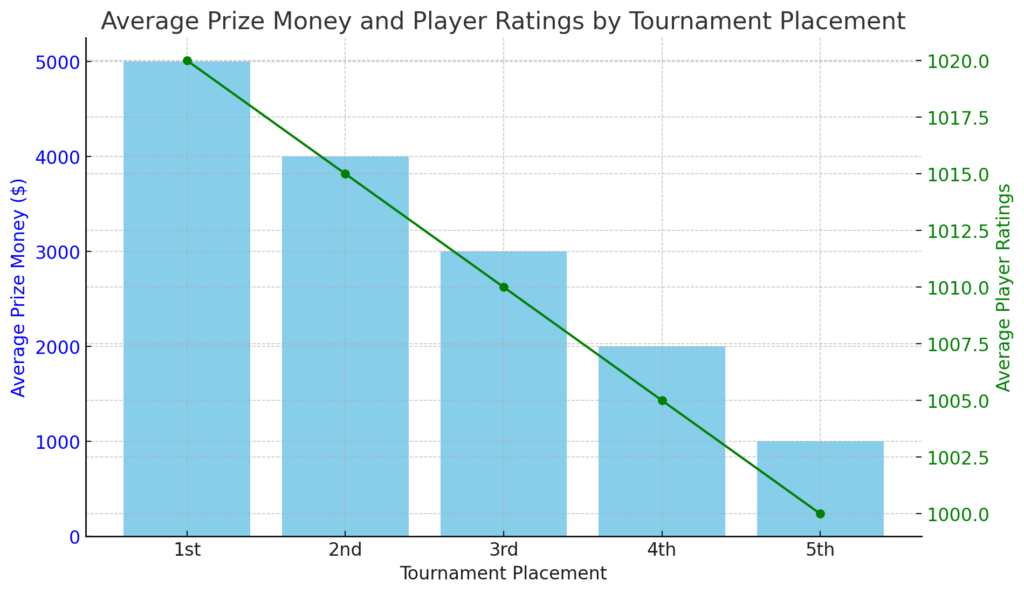
Historical Trends and Future Projections
Evolution of Disc Golf Prize Money
Disc golf, experiencing a surge in popularity, has witnessed a significant evolution in its prize money over the years. This section explores how the sport’s financial rewards have expanded and what this might indicate for its future.
- Historical Trends: The past decade has steadily increased average prize purses across various tournament tiers. This growth parallels the sport’s rising popularity and the increasing involvement of sponsors and media.
- Major vs. Lower Tiers: While Majors and high-tier events have seen the most substantial increases, lower-tier events have also experienced growth, albeit at a slower pace. This trend suggests a broadening of financial viability within the sport.
Future Projections of Prize Money
Looking ahead, several factors suggest continued growth in prize money within disc golf.
- Growing Sponsorships and Viewership: With more sponsors entering the sport and a rising audience, both online and in-person, there’s a greater financial influx, directly impacting prize pools.
- Expansion of Professional Players: As the number of professional players increases, so does the competition for larger purses, potentially driving up the prize money even further.
Visual Representation: Prize Money Growth
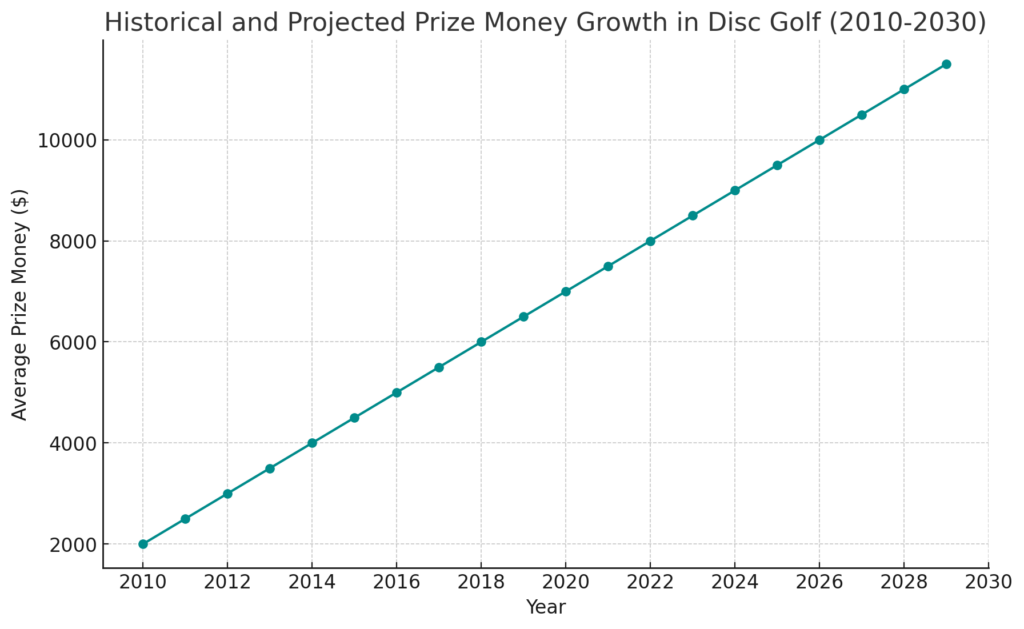
Through this analysis, it becomes clear that disc golf is not only growing as a sport but also evolving as a professional pursuit with increasing financial rewards. The data and projections paint a picture of a sport on the rise, with expanding opportunities for players at all levels.
Disc Golf Prize Money – A Growing Sport with Varied Opportunities
As we delve into the financial landscape of professional disc golf, it’s clear that the sport is on a promising trajectory, both in popularity and financial viability. However, this growth comes with a nuanced reality for players at different levels.
- Tournament Earnings Vary Widely: The analysis shows a stark variance in prize money across different tournament tiers, with top-tier events offering significantly higher purses. However, only a small percentage of players manage to earn substantial amounts from these tournaments, with most participants not earning prize money.
- Sponsorships and Diversification of Income: The importance of sponsorships and other income streams cannot be overstated. For many players, these sources are crucial for supplementing income and sustaining a career in the sport.
- Historical Growth and Future Prospects: The historical data indicates a steady increase in prize money over the years, a trend that is projected to continue. This growth is a positive sign for the sport’s future, suggesting increasing opportunities and rewards for players.
- The Top Earners’ Perspective: While the top earners in disc golf have seen significant financial success, their earnings are modest when compared to mainstream sports. This highlights disc golf’s growing but still niche status in the world of professional sports.
Read Next: The Best Disc Golf Bags You Can Buy
Professional disc golf presents a landscape of varied financial opportunities, characterized by increasing prize money and the importance of diverse income streams.
The sport’s growth trajectory points towards greater financial rewards and professional viability in the future, though it remains a path with challenges and competition.
As disc golf continues to evolve, it offers a unique blend of competitive thrills and potential earnings for those who navigate its courses skillfully.



